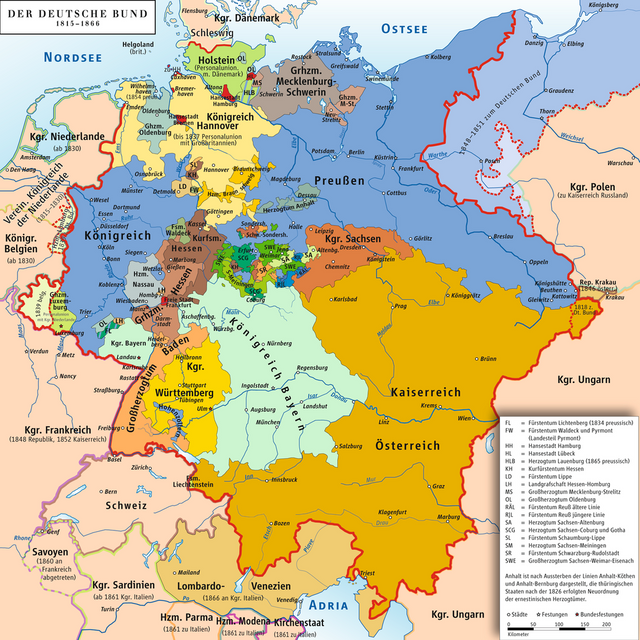Numismatics from South Germany
In the past, I've shown you a lot of coins very close to spot. Some coins a bit crazier than others, but most are modern coinage.
Now let's show you some coins unique not to Germany, but unique to the region I'm from. I'm talking about coins from the Kingdom of Württemberg (1806-1870). At that time a Germany as we know it today didn't exist. It was a loose amalgamation of dukedoms, kingdoms, and city-states.
 ziegelbrenner - own drawing/Source of Information: Putzger – Historischer Weltatlas, 89. Auflage, 1965
ziegelbrenner - own drawing/Source of Information: Putzger – Historischer Weltatlas, 89. Auflage, 1965Map of German Confederation 1815–1866
One of them is the Kingdom of Württemberg in the South of Germany. Situated in between the Kingdom of Bavaria, the Grand Duchy of Baden and the Principality of Hohenzollern. Over time Würtemberg, Hohenzollern, and Baden were combined into the modern German state of Baden-Württemberg. But that's still a long time away when those coins were struck.
1841 1 Dukat
 |  |
It features King Wilhelm of Württemberg on the front, and on the back you can admire the coat of arms from Württemberg. Lion and Stag flanking a shield with the elements of lion and stag reversed. Underneath you can see a ribbon that reads "Furchtlos und Treu" which means "Fearless and True".
An interesting detail is, that you can see the conversion rate at the back. It first reads, 1 ducat which equals 67 Mark and 23 2/3 Kreuzer.
Back at that time a ducat wasn't really used in day to day transactions, they were more or less standardized all over Europe. One ducat was roughly 3.44 grams of gold and was struck on 986 fine gold. Which was called "ducat gold". All ducat mints from any country back then weigh pretty much the same and had the same fineness.
The coin is only 20 mm in diameter, so just a bit smaller than a sovereign.
Kreuzer 1 & 6
 |  |
 |  |
One denomination that regular people would use a lot more frequently back then was the Kreuzer. It was pretty much the penny of Southern Germany back then. And in the mid 19th century they were made of billon. Which contained less than 50% silver. In this case 250 fine silver. Especially the 1 Kreuzer coin is soo light. It weighs just 0.6 grams and it's tiny only 14.2 mm (see dragon below for scale).
The later kreuzer coins don't look as nice. Let me throw in a metal detecting find of mine. A 6 Kreuzer from Württemberg 1825. Very worn, but I think you get what I mean. The 1825 6 Kreuzer looks a lot better than the 1855.

I hope I didn't bore you to death with this little peek into the history of Germany ;) Keep on stacking and stay safe in these uncertain times.
 Dragon coinage has to contain at least something precious. So this 1 Kreuzer will just do.
Dragon coinage has to contain at least something precious. So this 1 Kreuzer will just do.